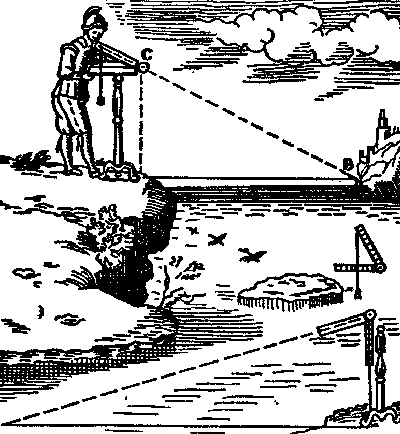Scientific Instruments
Today, a new class of machines and new viewpoint. The University of Houston's College of Engineering presents this series about the machines that make our civilization run, and the people whose ingenuity created them.
When James Watt was 19, he saddled up and left Greenock, Scotland. He rode down to London and apprenticed himself to a mathematical-instrument maker. Now there's a job description we no longer hear. To get an impression of what it means, go out to your garage and look that old wood plane -- the one that belonged to your grandfather. It's the gadget with carved wooden handles, fine brass fittings, and more adjusting knobs than you ever thought you needed.
That's no scientific instrument, of course. But in Watt's time, a plane was a drab wooden block with a steel blade wedged in place. Only as the idea of precision instruments spread did the old wood plane itself begin to look like one.
The other day I went out to watch surveyors measuring the neighbor's yard. Nothing was the same as in my surveying days -- the 1940s. The smooth, gray, electronically-enhanced theodolite bore no resemblance to the old transit I once used. The countless knobs and verniers -- the shiny brass -- all gone.
Mathematical-instrument makers were the people who took the skills of medieval clockmakers into a much wider world. Small wonder that one of their number brought the steam engine to the point where it dominated the nineteenth century.
For French historian Maurice Daumas, mathematical-instrument-making began with the late 16th-century invention of the sector. That's a device for measuring angles. Find the angle of elevation of a distant point on the road you're laying out. Then measure the distance, and trigonometry tells how far the road rises.
It was during the sixteenth century that science turned from deduction to observation. As it did, we demanded new instruments to extend our vision. And so they appeared: sextants, octants, astrolabes, theodolites, lens-grinding lathes, telescopes, microscopes, barometers, air pumps, thermometers, clock-making machinery, balances, transits -- machines whose purpose was to teach new electrical and mechanical principles.
Watt, of course, went in a different direction. He brought an instrument-maker's perspective to the great lumbering eighteenth-century steam engines. Daumas believes that Watt's association with John Wilkinson, creator of the large boring-mill, was crucial.
Wilkinson's new mill could bore a four-foot engine cylinder within a sixteenth-of-an-inch accuracy. Heavy machinery was about to be built with the same loving accuracy as those old brass and steel instruments. Today we make precision-machined cars and airplanes. We've given small-scale precision over to automatically machined parts and electronics -- sealed away in plastic casings.
Those shiny old brass micro-manipulators and vernier adjustors -- transits and fine watchwork -- breathed their last after WW-II. All that remains of that in my house is an old wood plane. It is a scant mirror of a forgotten epoch of really lovely machinery.
I'm John Lienhard, at the University of Houston, where we're interested in the way inventive minds work.
(Theme music)
Daumas, M., Scientific Instruments of the Seventeenth and Eighteenth Centuries and their Makers. (tr. by Mary Holbrook) London: B. T. Batsford, 1972.
I am grateful to Judy Myers, UH Library, for bringing the Daumas book to my attention.

From a 1639 book on geometry and surveying by Duchesne, Fleur des pratiques du compas de proportion.
For a collection of 19th century images of mathematical instruments, click on the thumbnail above.
